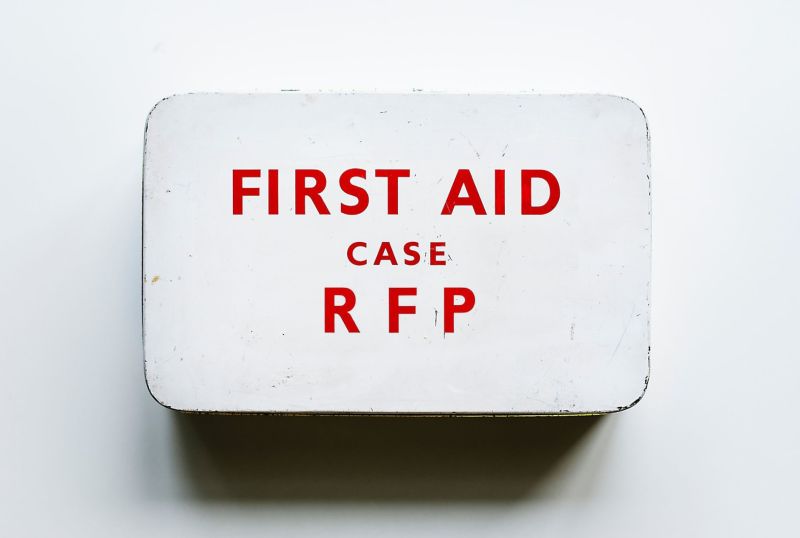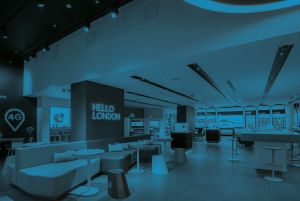Alternative approaches for procuring creative services.
Most people will tell you that this type of engagement is a waste of time and money, for both client and agency. So why do companies continue to use such outdated methods for procuring creative services?
Of course, an RFP is perfectly acceptable for items that can be accurately and consistently compared. Things like paper clips, pens and toilet paper! As well as catering operations, security systems and specialist equipment. But is an RFP the right way to secure an expert to consult on complex design problems?
I understand the need to assess different creative agencies when looking for a partner for your latest, most important project. I understand the need to get this decision right… even that your future may depend on it and I understand how difficult it is to measure the success of an idea that has yet to be realised.
However, an RFP rarely delivers the value it sets out to achieve. The process spreads the risk among the group, but such consensus decision-making is very slow and ineffective. No one is taking full responsibility. When you run a traditional RFP process to find an agency, you are not doing yourself or your business any favours.

You can read my thoughts on a simple, yet effective alternative approach to RFPs below, but first, to help you understand from an agency point of view the limitations of RFPs, I’ve outlined ten points on why they fail to deliver.
1 You cannot read the label from inside the jar
I am always cautious of self-diagnosis. Most companies are inward looking, influenced by their business culture, approach, brand and mission. Often, they can’t move from this filtered viewpoint. And nor should they. An internal filter combined with an agency’s external point of view is the best way for a project to meet the demands of the business.
Some RFPs are very prescribed. They may even contain sections that describe the solution, the process, the timings and the budgets connected to solving the problem. But this is like someone arriving at a doctor’s surgery with stacks of documents recently downloaded from the internet, telling the doctor what action is required.
Even if you do understand the full extent of your issues, you still need an external agency to validate and confirm your assumptions, and to recommend the best way to arrive at a solution. Conducting this due diligence is the minimum requirement and will help minimise risk and save time and money from the start.
2 Don’t prescribe before a proper diagnosis
Most RFPs ask their shortlisted agencies to prepare creative solutions, using this as a means of differentiating between candidates. This ‘see before you buy approach’ puts the agency in an impossible position — they are being asked to come up with a solution before properly diagnosing the problem. In most other professions, this is tantamount to malpractice. Inevitably, creative routes that emerge from RFPs have no fully formed strategic foundations, hindering their ability to offer fresh insight.

3. Get to the root of the matter
Often with an RFP, the problem has been identified, but the reason it’s come about has not been discussed or quantified. Which means you are missing a key opportunity to explore other solutions. Before answering a brief, any agency worth their salt, will first want to investigate it further themselves. You simply can’t solve a problem without first-hand insight of the business, brand, customers and staff. But an RFP doesn’t allow for access to key information and stakeholders.
4 Don’t keep agencies at arm’s length
The RFP process keeps participants at arm’s length and focuses on presentations rather than conversations. It’s not a collaborative process. An agency needs to understand your problems through a deep dive into your company and the particular area of the project in hand.
5 An RFP is ineffective for complex problems
An RFP submission rarely achieves the right solution for your problems. Information gathering and analysis underpins all robust design solutions. This level of insight can only be acquired through first-hand interactions with the company project team via structured discussions, brainstorms, interviews and workshops.
6 You can’t compare apples to avocados
No matter how rigid your RFP forms are, all the agencies taking part will be trying to stand out. They want to grab the inside track and your attention. They will all define their services in a slightly different way, using different language and different metrics. This makes it very hard to compare agencies’ RFP submissions. An RFP sets out to level the playing field, so that you can compare and contrast different approaches, capabilities and skills. But, in the end, the resulting decision is likely to be based on information or feelings that have nothing to do with the RFP.

7 Cheapest or best?
An RFP rarely reveals the budgets involved. This is partly to discover which agency is prepared to do the job cheapest. But this totally overlooks the role of value or innovation.
In what other part of your life (business or personal) do you set about hiring an expert based on how cheap they are? You are either searching for best price or best quality. Rarely, if ever, do these two objectives align.
8 Nothing comes for free
It’s amazing that so many people think RFPs produce free work. Let us be very clear — it is not free for the agency or the client. Let’s say that each agency wins one of every five RFPs they take part in. How do they recover this cost? The cost, of course, is hidden in their proposal. And not just the cost for your RFP but for the other four RFPs too, because agencies have to inflate their fees and additional costs elsewhere to recover the cost of RFPs.
This is bad news for the whole industry as it encourages artificially inflated pricing, which is exactly what happens in all discounted or free-design marketplaces, like cars, antiques or kitchens.
9. Putting the cart before the horse
Not only are creative agencies being asked to answer questions without having all the access and information they need, they’re also being asked to provide thinking, ideas, ways forward and solutions before being paid for them. I can’t think of any other industry where this happens. This is what we do for a living, so we shouldn’t just be giving it away.
10 Regurgitated ideas
Because there’s so little time or resource for RFPs, and agencies have to create solutions before they’ve had the opportunity to fully investigate what’s at stake, when an agency presents their creative strategy, you should ask yourself: where does this work come from? What insight sparked the concept? Is it previously shelved work from the bottom drawer? Are the concepts fresh and relevant to your brand and project?
It’s worth noting that many professional design firms around the world are against free-pitching, though rightly not against genuine, well considered RFPs, such as those that follow the best practice process outlined in the DBA’s ‘How to buy design’ guides.
Part Two: An alternative approach
There is another way. And it’s simple. Turn presentations and form
filling into conversations and workshops. In today’s world, it is
important to find an agency that fits your business. An agency you can
build a relationship with. One that you can turn to in sickness and in
health.

Design agencies already have their track record, client list and areas of expertise to demonstrate their capabilities, but at the end of the day, personal chemistry is vital. Defining an outline brief will clarify what you’ll be needing from your agency and will narrow the playing field to agencies that have the relevant attributes. Then you can start talking to relevant candidates.
Have conversations (not presentations)
Research a broad range of agencies — current, past, new and ‘rising star’ agencies. Reach out to colleagues, friends and professional associations for recommendations. Working from an initial list of 10–15 agencies, visit their websites to understand their capabilities and expertise. Working with your internal team, refine your long list to seven agencies max.
Email and set up conversations with each of the agencies. Make sure you set up the call as an initial discussion about a project you are conducting. Describe the purpose, the project activity and aims, the timescales, the budgets and the process. The clearer you can be, the easier it is to understand the agencies’ suitability and willingness to engage with you and your project. Good agencies will ask good questions. So be prepared. If you are not able to answer the question, let them know why.
Meet face to face
After initial discussions, refine your list down to your top three or four agencies. Work with your internal team to discuss this beforehand. Meet the agencies to discuss the project further. Tell them that they are on a shortlist. An open and honest approach will naturally encourage agencies to accentuate their own perceived points of difference.
If possible, meet the agencies at their offices/studios, even if this means travelling out of town. It’s amazing what you can glean from visiting the creative den of a potential agency partner. Once you’re there, ask to see the studio working environment. Plan and schedule a tight agenda for this meeting. Discuss how the agency’s process links to successful results. Ask them to walk you through a case study of a project similar to yours.

Hold a workshop
Select two agencies for half-day workshops at your offices. Expect to pay the agencies for their time. Defined and delivered by the agency, this workshop is about understanding combined dynamics and getting a feel for what it’s going to be like to work together.
Hire the agency that’s best for you
Once the workshops are done, have a discussion with your team to decide which agency is the best fit. Commission the most suitable agency to work alongside you, to get to the heart of the issue at hand.
Conclusion
The RFP process is flawed and outdated, and wastes everyone’s time and money.
Ditching RFPs and using an alternative approach will attract the brightest agencies from across the globe; as well as providing the best opportunity for the work to meet the project needs and to exceed expectations. The best agencies produce their best work if their client works alongside them with a shared goal. Collaboration is the key to making success happen.
Positioning your company, your brand and yourself as an innovative thinker, willing to move away from traditional procurement methods, is no bad thing and will help towards long-term, continued success.






